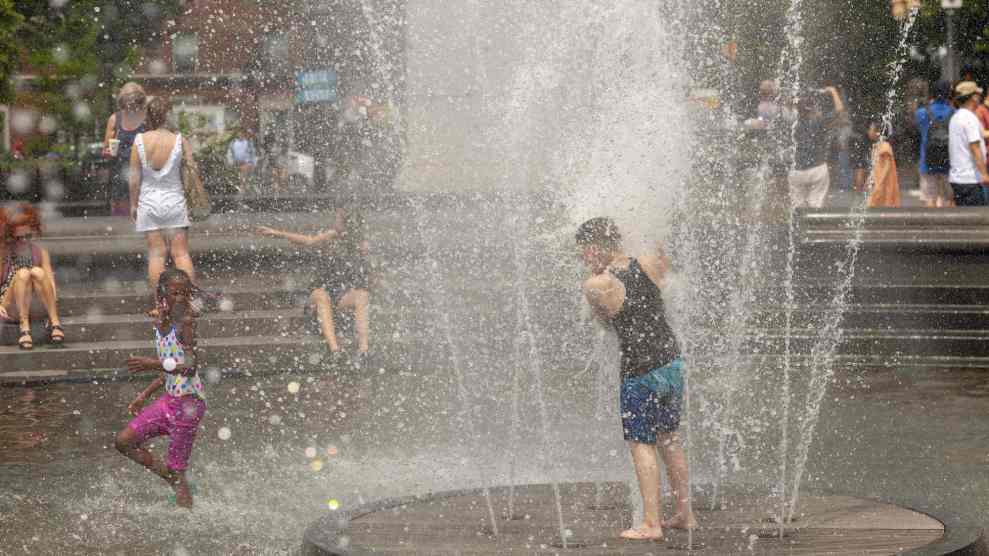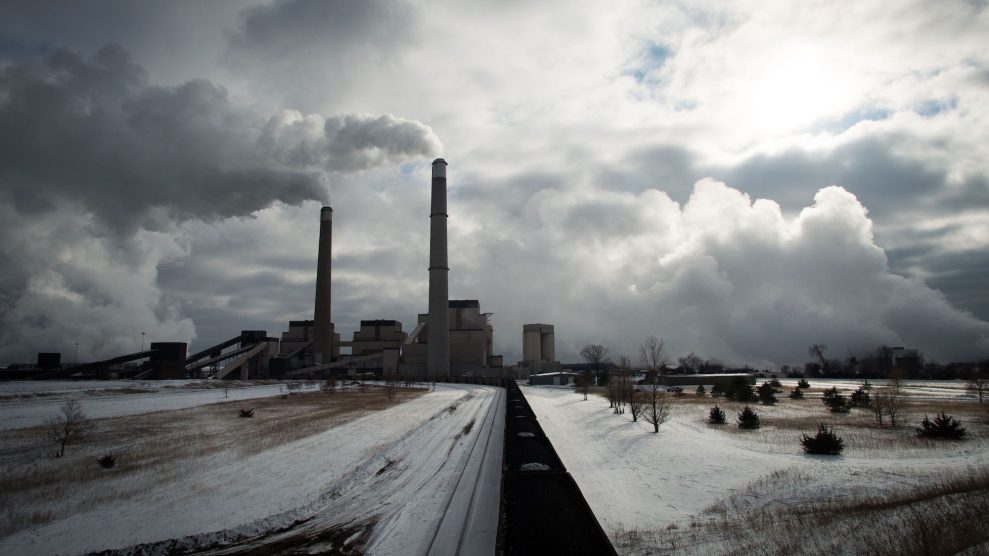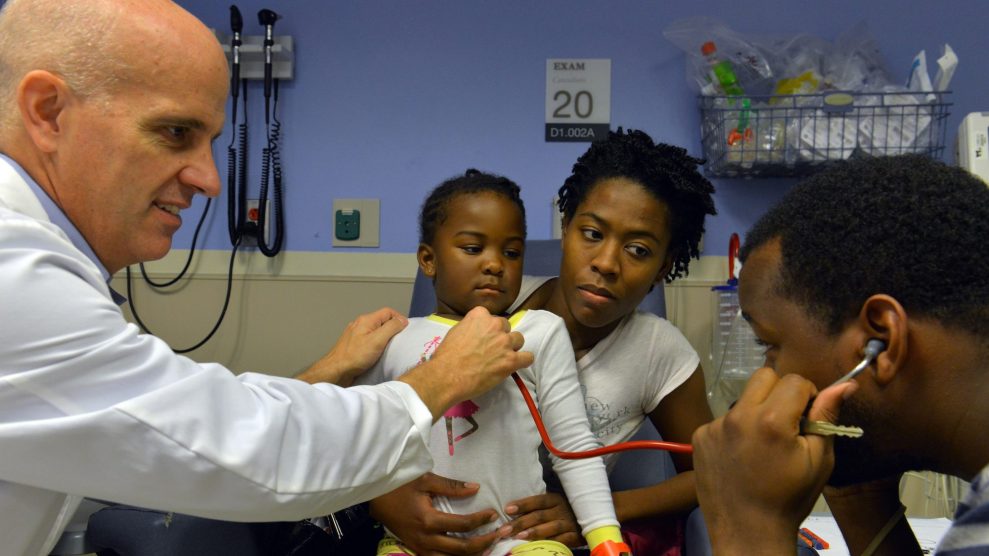
Richard B. Levine/Zuma
This story was originally published by Inside Climate News and is reproduced here as part of the Climate Desk collaboration.
Researchers are now connecting the dots between the climate crisis and the havoc heat can wreak on developing minds.
Extreme heat and other climate calamities “impact our first and worst, our most vulnerable,” said Jennifer Runkle, an environmental epidemiologist at the North Carolina Institute for Climate Studies. She is the lead author of a recent study which found that during periods of intense drought and heat, children and young adults showing signs of mood disorders and suicide risks visited emergency rooms at alarming rates. The risk soared in the hardest-hit parts of the state, especially in lower-income areas and densely populated cities.
Children are especially vulnerable to extreme heat and drought because they have a diminished ability to regulate their body temperature or otherwise cope with the heat. To understand how dangerous extreme weather could be for them, Runkle used data in North Carolina, a state routinely ravaged by dry spells in dozens of counties and droughts that can last months at a time.
As in many other parts of the world, the state has gotten hotter and dryer in recent years. Runkle and her colleagues focused their study on dry periods from 2016 to 2019. They found that young people were visiting emergency departments at alarming rates whenever there was an extended heatwave, a drought or both.
“If you have a child that grows up with increased environmental stress…that is early life stress.”
During heat waves in Charlotte, North Carolina, for example, psychiatric emergency visits by young people jumped 29 percent. And during a drought in the state’s western mountains and on the eastern coastline, emergency room visits more than quadrupled in those parts of the state.
Within that span, around 1,800 young emergency department admits were for mood disorder cases, including 1,300 for suicide attempts. The most at-risk children were from low-income families with a history of mental health issues. A higher proportion of emergency admissions were Black or girls younger than 12, according to Runkle’s study.
In a separate paper published in 2023, another team of scientists documented similar trends with pediatric patients in New York City. Dr. Perry Sheffield, lead author of the study and associate professor of environmental medicine, climate science and pediatrics at the Mount Sinai School of Medicine, has been interested in how climate affects children for years.
Her group looked at 83,000 emergency department visits between 2005 and 2011 and tried to find a link between these admissions and spikes in temperature. Like Runkle, their study saw elevated cases of anxiety and bipolar disorders.
“People who are more vulnerable are those who already have mental health conditions,” Sheffield said.
Each team’s work is consistent with previous research linking rising temperatures to depression and suicidality, violence and hospitalizations in adults. Young people may be even more susceptible due to several factors working in tandem, according to Dr. Joshua Wortzel, a pediatric psychiatrist at Brown University who also studies temperatures and suicidality in kids.
He notes that thermoregulation, a person’s ability to maintain a stable body temperature despite external conditions, is often dysfunctional in children predisposed to mental illnesses. If children are also taking medications to treat those mental illnesses, heat exposure could be even more dangerous. Some antipsychotics reduce sweat production—a cooling process—while simultaneously altering the hypothalamus, which Wortzel calls “the main thermostat of the brain.”
Temperature and a therapeutic neurotransmitter called serotonin have a close relationship as well. When it’s suddenly too warm out, levels of serotonin can rise, according to Wortzel. With too much serotonin, other regions of the brain, including those that regulate temperature, lose their ability to function properly.
That can also make it harder for people of all ages, but especially for kids and teens, to control their emotions. Wortzel suggests that for developing brains,irregular levels of serotonin means children could be more prone to anger, irritation and exacerbated symptoms of mood disorders. The prefrontal cortex, the part of the brain that’s crucial in controlling behavior and executive function, also suffers from serotonin induced by hot weather.
Sleep and physical activity play a huge role for kids too, said Dr. Martin Paulus, scientific director and president of the Laureate Institute for Brain Research at the University of Tulsa. Families who live in hot areas are prone to restlessness at night and chronic inflammation that over time can lead to foggy memories and depression.
What’s especially tricky with physical activity is that being active does prime the brain’s hypothalamus-pituitary-adrenal axis to better regulate depression and aggression, and keep stress hormones from going awry. But most kids don’t—and shouldn’t—play outside when it’s excessively hot. By moving around less, Paulus is concerned about the various ways stress can slip into children’s lives and elevate their risk for mood swings.
Both experts feel metabolic imbalances that affect energy levels and inflammation sparked by heat are additional areas of concern. Inflammation left unchecked, they believe, can affect levels of serotonin, dopamine and hormones. According to Wortzel and Paulus, when stress hormones are constantly in flux, it could lead to poor mental health now and in the future.
“If you have a child that grows up with increased environmental stress…that is early life stress,” Paulus said. Stress at such a young age is associated with greater risk for depression and post-traumatic stress, and both can have enormous physical and mental consequences that affect children long into adulthood.
The hottest parts of the US should brace themselves for a stressful future, Paulus suggests. “We know that high humidity and high heat in the South and Southeast will continue to increase. These areas are most likely to be disproportionately affected over the next few years.”
Parents and other adults in kids’ lives need to be on the lookout for changes such as mood swings and isolation from other children, Wortzel said, along with “statements about hopelessness, helplessness, worthlessness, thoughts of not wanting to be around anymore.” Whenever it’s hot out, adults should pay extra attention if children mention overexertion and dehydration. Cooling centers and cooling pillows that pull heat away from the body will be increasingly important in hot cities as temperature spikes become more normal.
Clinicians, too, must be vigilant, and ready to urge psychotherapy for young people affected by heat. Wortzel acknowledges this is a problem that might not be easily or widely accepted. How the climate and environment affect mental health is still broadly debated, despite plenty of research. So doctors must be “fairly aggressive” in advocating for better public awareness of the problem, he said. Paulus agrees, and has encouraged clinician scientists to adopt monitoring systems that identify trends in childhood mental wellness and extreme weather.
That enhanced awareness could protect kids from the ramifications of a warming world. It starts with clinicians themselves, many of whom aren’t aware of the climate-mental health connection, experts said. “I think it’s important to start bringing extreme heat and other climate stressors to the clinical community as a risk factor,” Runkle said, “so that we can get better clinical [and] school guidance out there.”












